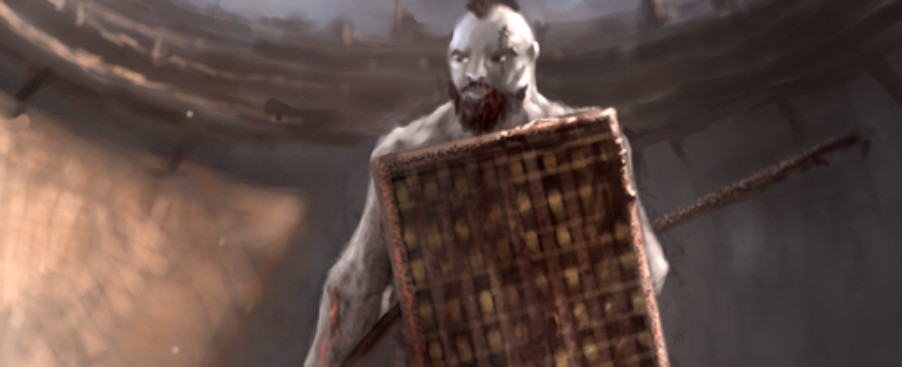Knights of the Chalice 2 Updates, $31,758 and Counting
-
Category: News ArchiveHits: 1208

With $31,758 already pledged and over a month still to go, Heroic Fantasy Games’ Kickstarter campaign for Knights of the Chalice II is moving along at a relatively brisk pace. In some way this success can be attributed to the steady stream of updates the campaign’s been getting. So, let’s check them out.
Update #6 shares a six-minute trailer for the game. Update #7 talks challenging encounter design. Update #8 informs us that the “additional character feats” stretch goal has been reached. Update #9 shares some ideas on how to create non-linear adventures. And finally, update #10 lets us know that the second stretch goal, the one that will add new magic items and the Gelatinous Cube companion to the game, has been secured.
Here’s the abovementioned trailer:
And an excerpt from the ninth update to get you started:
In today's update, we will review various approaches RPG designers can adopt to create intelligent non-linear adventures. This reflection came about with the help of Tiavals and much of the text below was written by him.
Non-linear adventures can be particularly enjoyable to RPG players thanks to the feeling of player freedom they create. Non-linearity itself is seen by many players as something that is very valuable. Non-linearity can also make a game a lot more replayable.
However, non-linear adventures present particular difficulties for map and module designers. If the adventure is linear, the designer knows exactly what level the party is at when facing each particular encounter. As a result, he or she can tailor each encounter and make sure that all encounters are very challenging and interesting to the player.
If the adventure is non-linear, the designer does not know what level the party has reached when it meets a particular group of enemies, and the party's level is likely to be too high for the encounters.
Using a system of automatic enemy level scaling would be unrealistic and wholly unsatisfactory. The question then is how should we handle the loss of challenge that comes from the fact that the party's level is too high for the encounters being faced?
We will now outline seven possible solutions to the problem.
1) Design encounters that present interesting challenges regardless of the level of the party. Surprise the player by having the monsters use level-independent tricks, spells (e.g. Stinking Cloud) and abilities (e.g. paralysing touch attacks) that rely on saving throws rather than Hit Point damage.
That way, it would still be challenging for a party of level 5 to explore a dungeon meant for level-3 characters. However, it can be difficult to implement this solution. Once a party gains access to the spells Fireball and Haste at level 5, many combat encounters designed for a party of level 1 to 4 become much easier, if not trivial.
2) Sub-divide the adventure into a number of parts associated with a particular party-level range. For example, an adventure intended to take characters from level 1 to level 9 could be split into three parts. The first part is associated with party levels from 1 to 3, the second part is associated with party levels from 4 to 6 and the third part is associated with party levels from 7 to 9. Thus, we retain control over the flow of the game while allowing the player to choose the order of his quests within each sub-division.
For instance, the game may start in a small village associated with party levels from 1 to 3. There's an Orc cave intended for a party of level 1, a ruined tower intended for a party of level 2 or 3, and a caravan robbery encounter intended for a party of level 2 or 3. A level-1 quest is necessary because a level-1 D&D party generally cannot handle higher-level challenges. Once the party reaches level 2, it is free to undertake the remaining two encounters in any order.
Once the party reaches level 4, and moves from the village to, say, a fortress, it gains access to three new quests that can be undertaken in any order. A level-4 party can take on level 5 and 6 encounters with some thought and good tactics, so all three quests can be designed for a party of level 5 or 6.
The fortress quests may include a swamp hag, haunted ruins, and a giant bandit with human minions who threaten the fortress. Once the party has completed the area, it can move forward to the next part, associated with party levels from 7 to 9. With this approach, we improve non-linear encounters by restricting non-linearity to a certain range of party levels.

